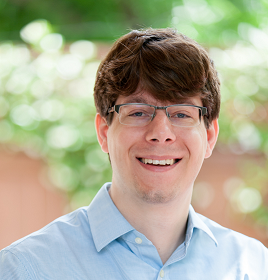Imagine dropping your child off at school and watching them for a few minutes before you leave. What would you see?
Would you see your child walk alone on the outskirts, not talking or interacting with anyone? Would you see your child walk towards a group of their peers and stand on the periphery, wanting to join and engage, but clearly not knowing how?
For those with autism, these experiences are all too common. The big question isn’t why, but really how to help. This isn’t just a struggle for parents, but also many people working with this community.
Have you ever stopped to ask yourself why? After being in a social skills group, or many groups, why is someone still struggling to connect and build relationships, be they friendships or romantic relationships?
The answer is simple. Your child is learning the wrong things. Yes, this seems harsh and maybe this isn’t true for you or the people you treat… but what if it is? Ask yourself the following question: Do you or the person you are supporting have the connections and relationships they want? Are they on the right path to developing them? Again, if the answer is ‘no’, even with all the qualifiers to soften it, the unfortunate truth is: they aren’t learning what they need to.
That’s because relationships are not built on rules alone. Sure, social rules and etiquette dictate what is deemed appropriate behavior in a specific context, but arming yourself with those rules is not enough. Knowing these rules will not help you to build a connection. Applying these rules will not help you to deepen or sustain a relationship.
That’s because relationships are dynamic, not static. A simple word can mean something completely different depending on the persons expressions and tone. The best example is the word “fine.” When you ask someone how they are doing and they respond with “fine,” you know to stop and think. Because “fine”, a simple word that should mean okay, often means “I have too much going on, but I don’t want to talk about it”, or “I don’t want to focus on me right now, lets focus on you,” and if you hear this from your partner, it usually means “You’re on the verge of potently messing up and hopefully you make the right decision.”
Two of our speakers, Daniel Wendler and Kirsten Lindsmith are two advocates who have navigated the dynamics of relationships and successfully built lasting and meaningful personal connections. Although their approaches were different, each was successful in their own way.

Daniel Wendler
Daniel Wendler, an academic and doctoral candidate, approached creating connections as he would any other subject of interest, with practice and dedicated study. Thinking that the root of connection lies in nonverbal communication, Daniel started to study the various meanings of body language. He could probably tell you what it means when a person looks up and to the left, versus if they look down and to the right. But as one can imagine, this became very confusing and not very effective.
As a result, Daniel re-approached his ‘problem’ using more dynamic methods of information gathering and processing. Looking instead at the larger nonverbals communicated, rather than what each subtle gesture, look, or pause could possibly mean. He stepped back from focusing on the
minutia to reflecting on the larger picture – Is the person in front of me comfortable or are they uncomfortable? His approach is thoughtful and logical.

Kirstin Lindsmith
Another advocate, Kirsten Lindsmith, takes a more introspective and emotionally focused approach to building and sustaining connections in a neurally diverse world. Kirsten writes a hugely successful and insightful blog The Autism Spectrum: Gender, Sexuality, Culture & Life on the Autism Spectrum.
Kirsten’s blog is funny, educational and shines a light into a world that many seek to understand. Although different from Daniel, Kirsten’s learning process on how to successfully navigate the sometimes murky waters of relationships is a process involving introspection and deepening self-awareness.
Two fundamentally different approaches – the study of others vs the study of self, but both with amazing results. Through their journey, Kirsten and Daniel have not only built the relationships they want, but have also discovered the type of friend they want to be.
Want to learn how Daniel and Kirsten are able to be successful and build the friendships/romantic relationships that they want? Hear their journey and learn the techniques at this year’s Love & Autism Conference on October 8 & 9.

